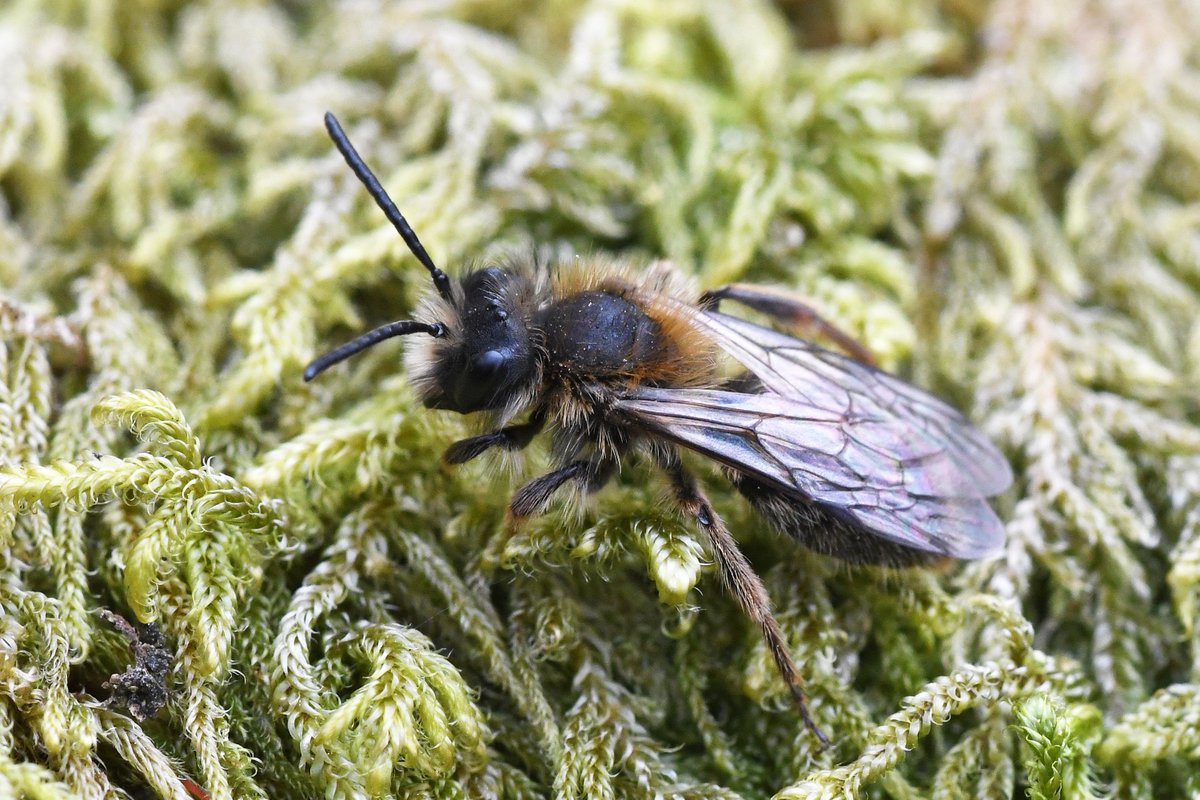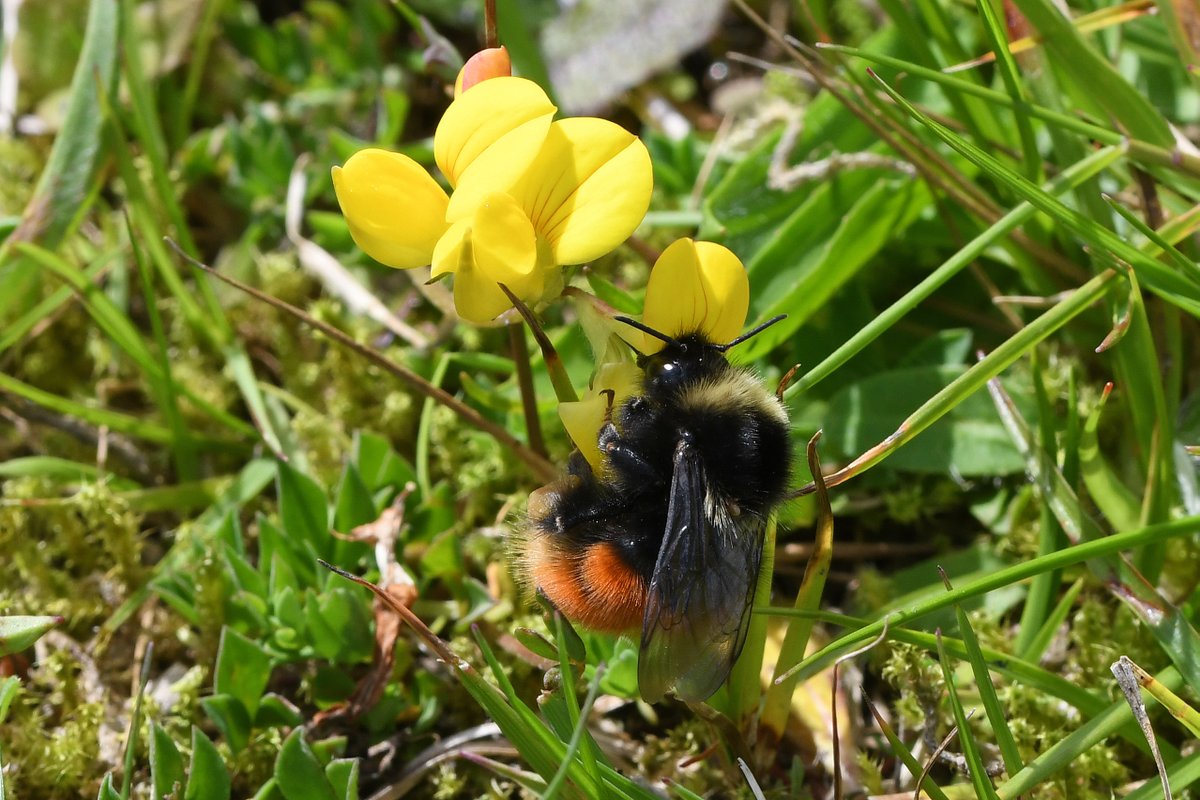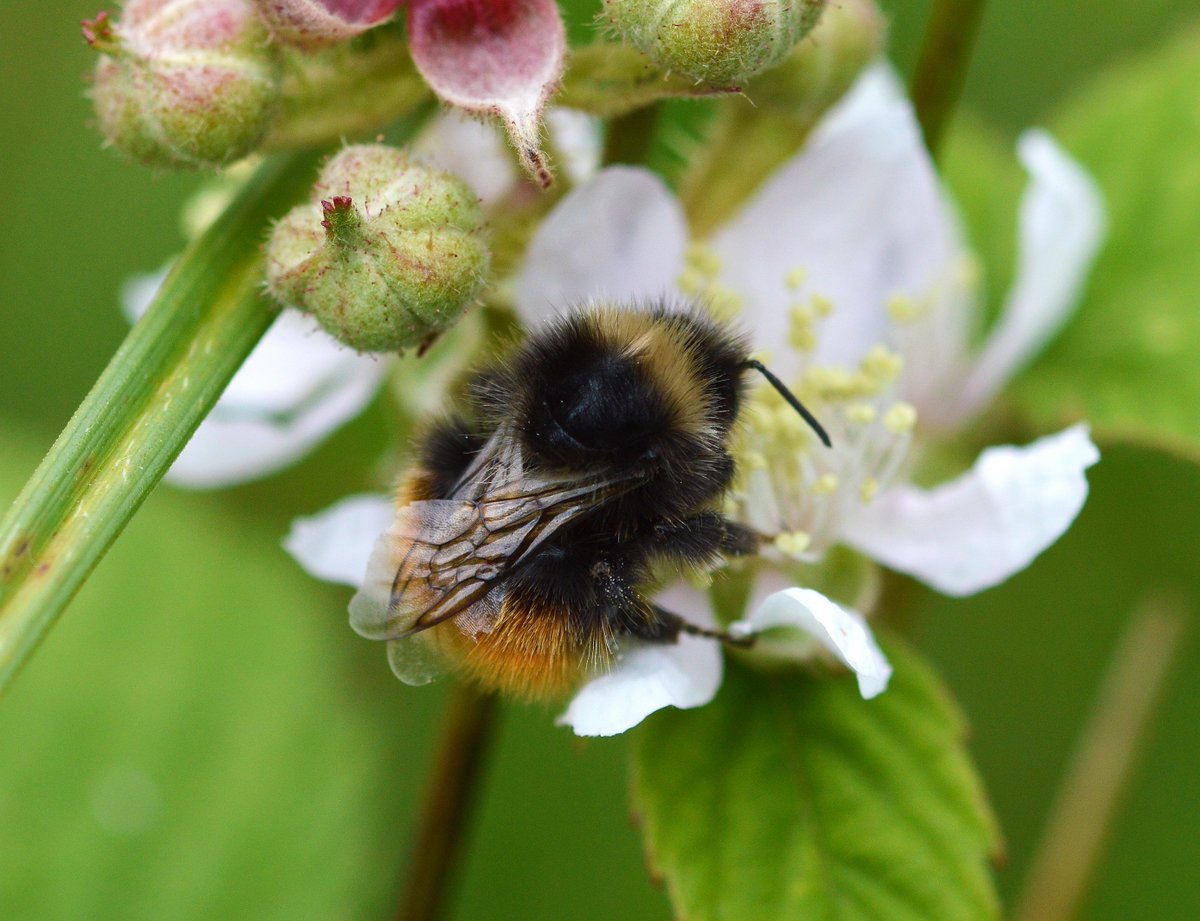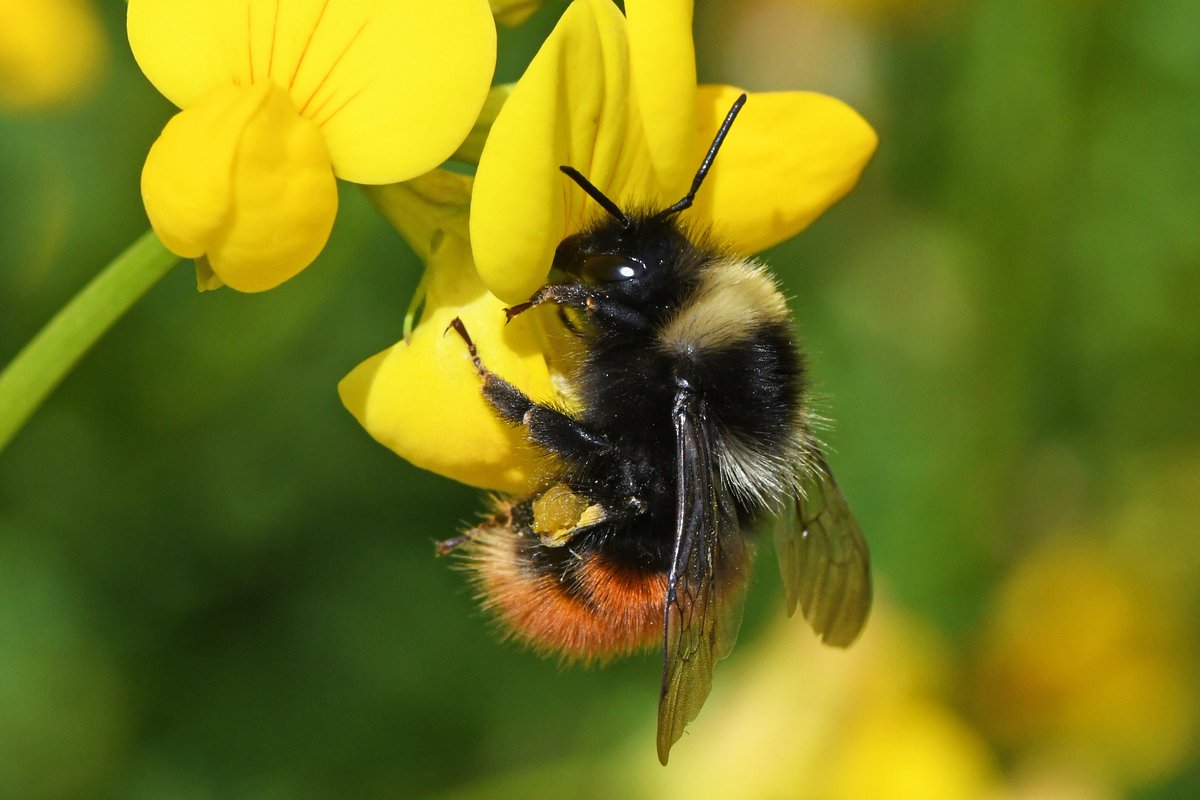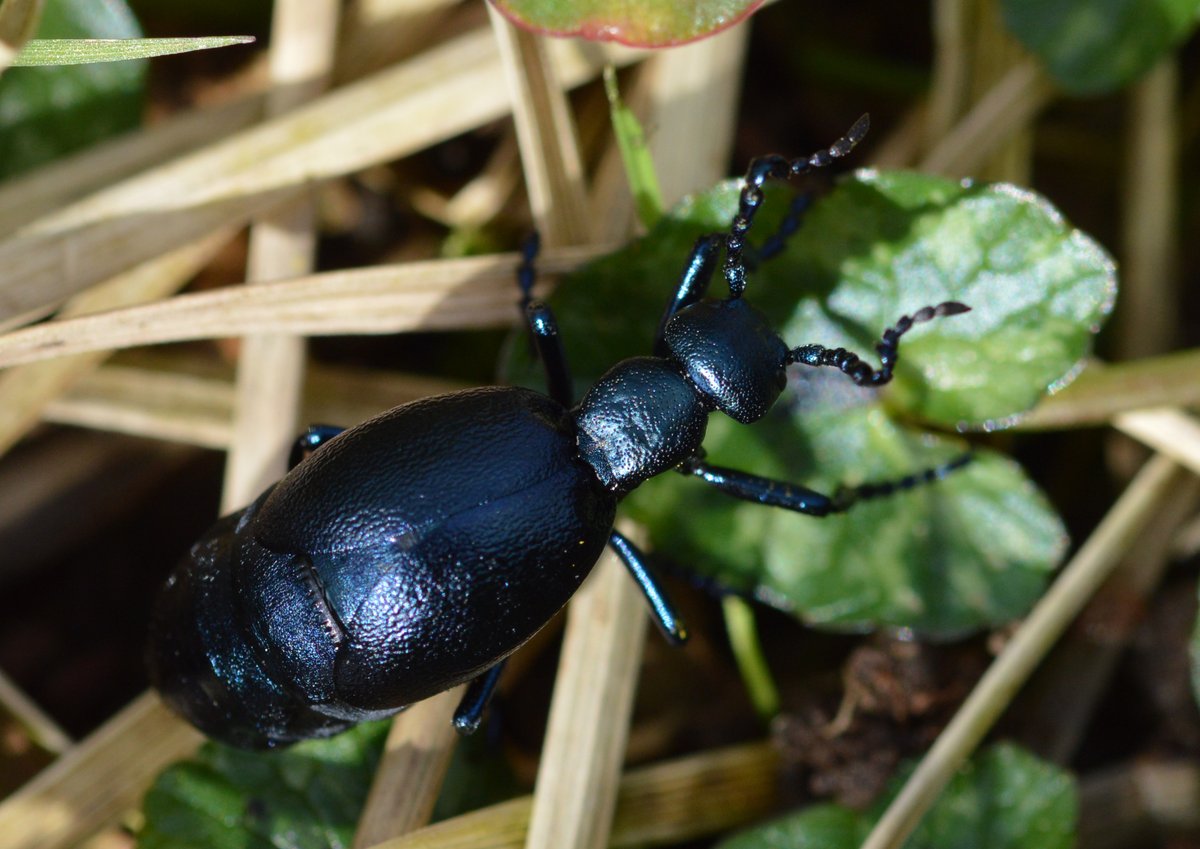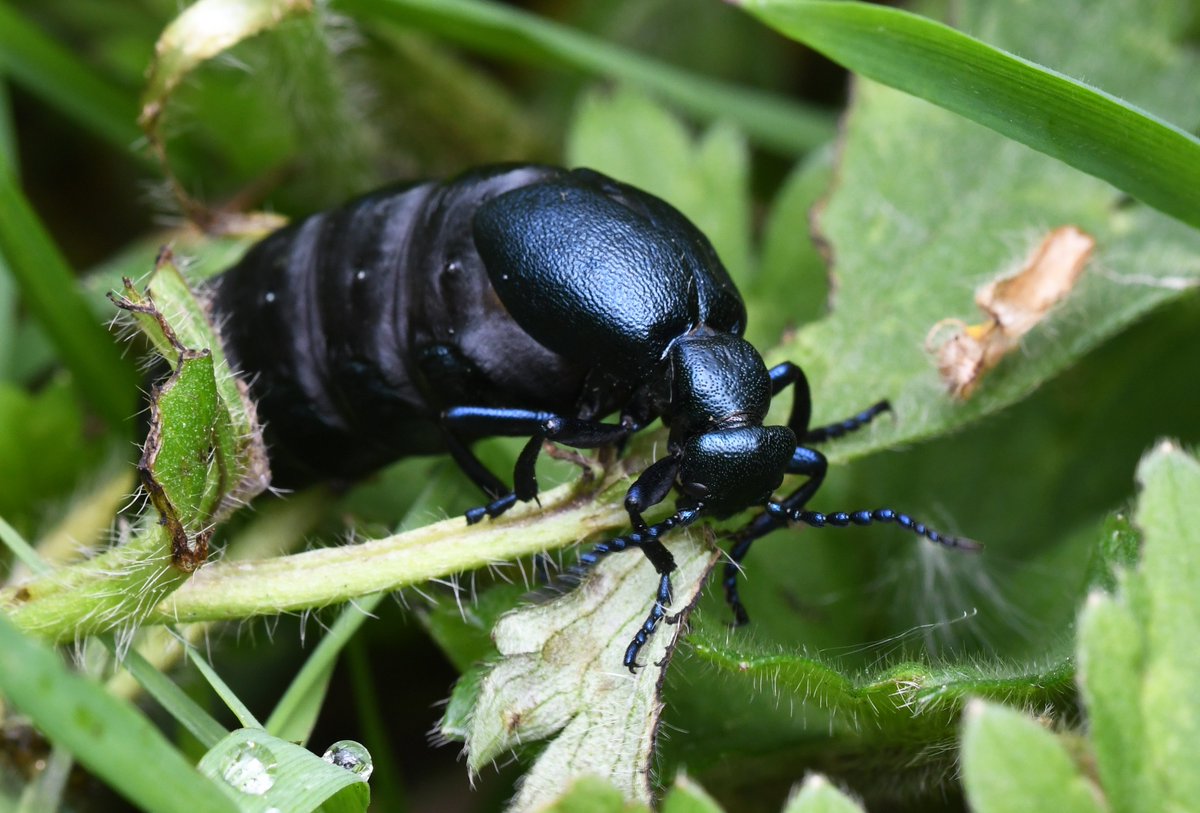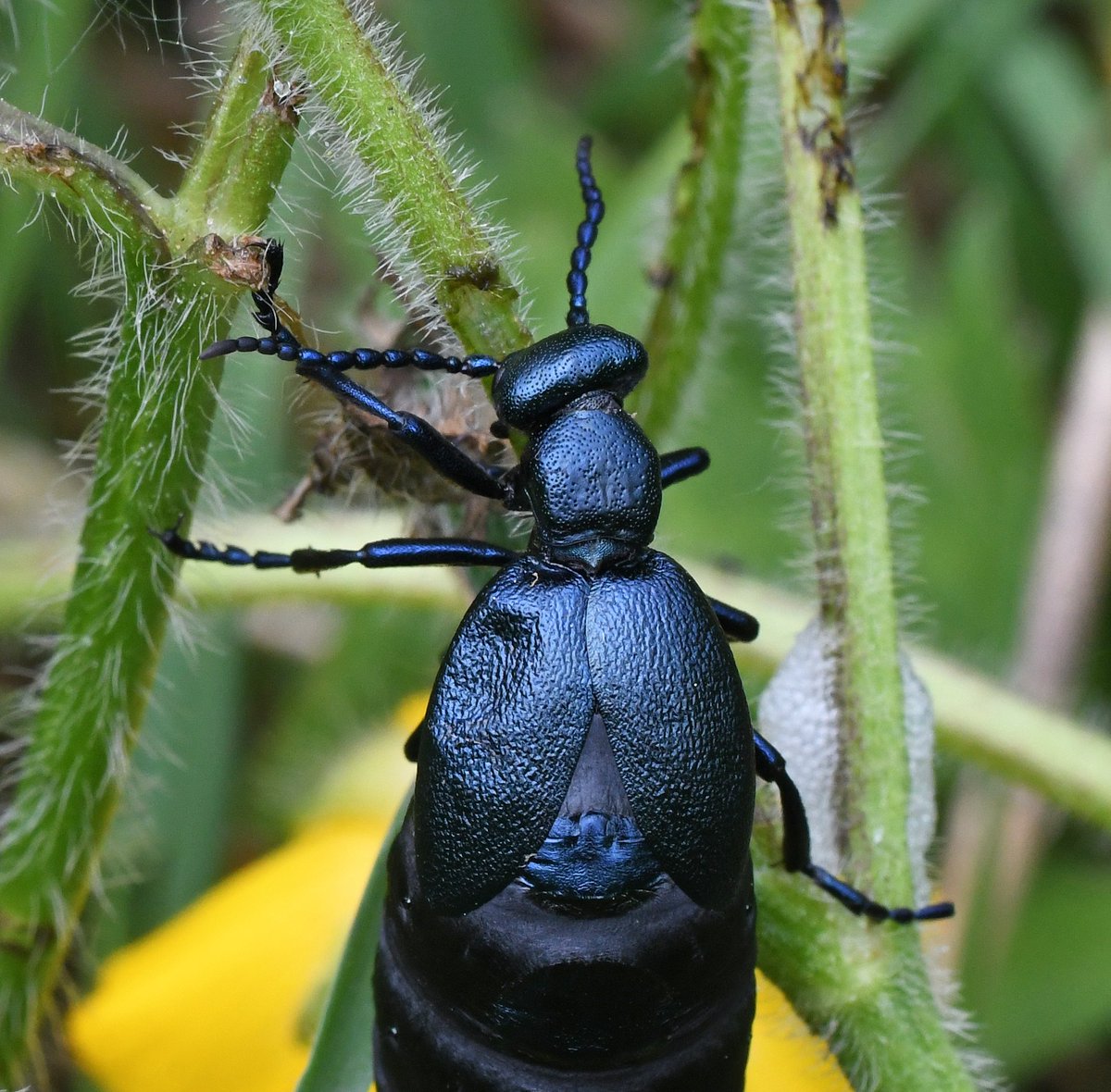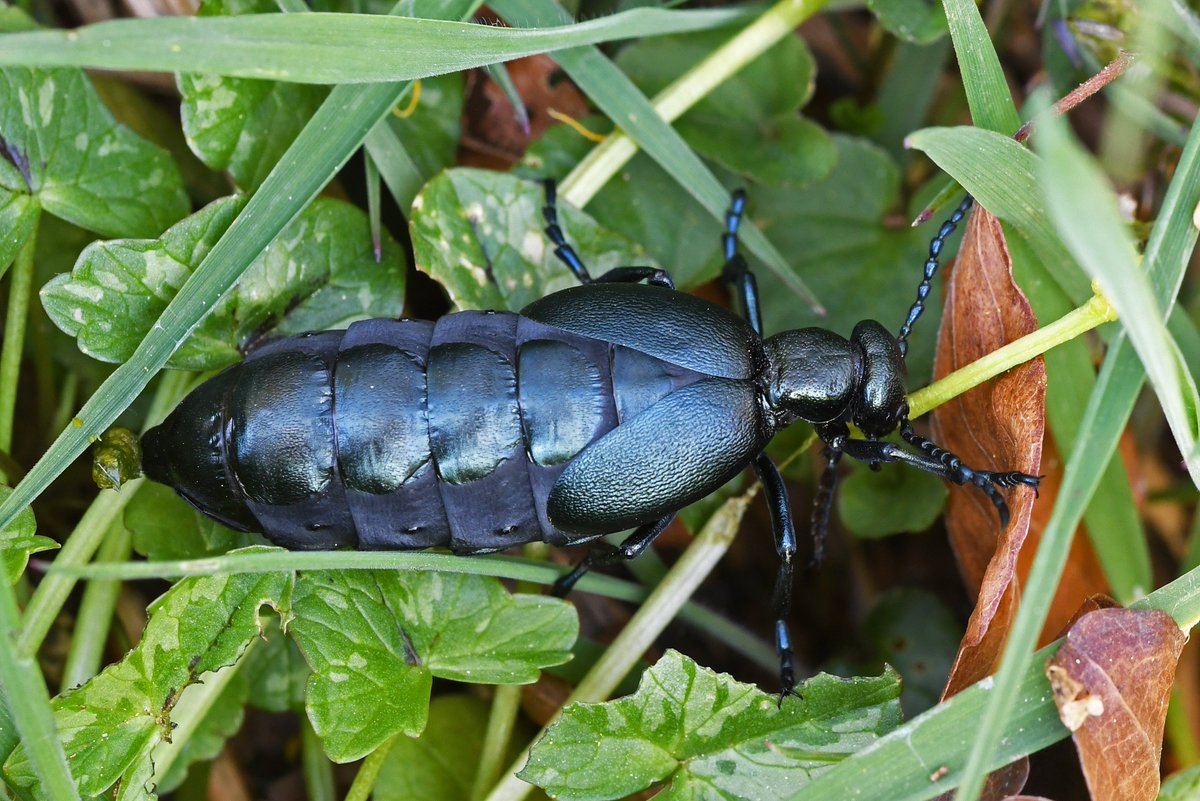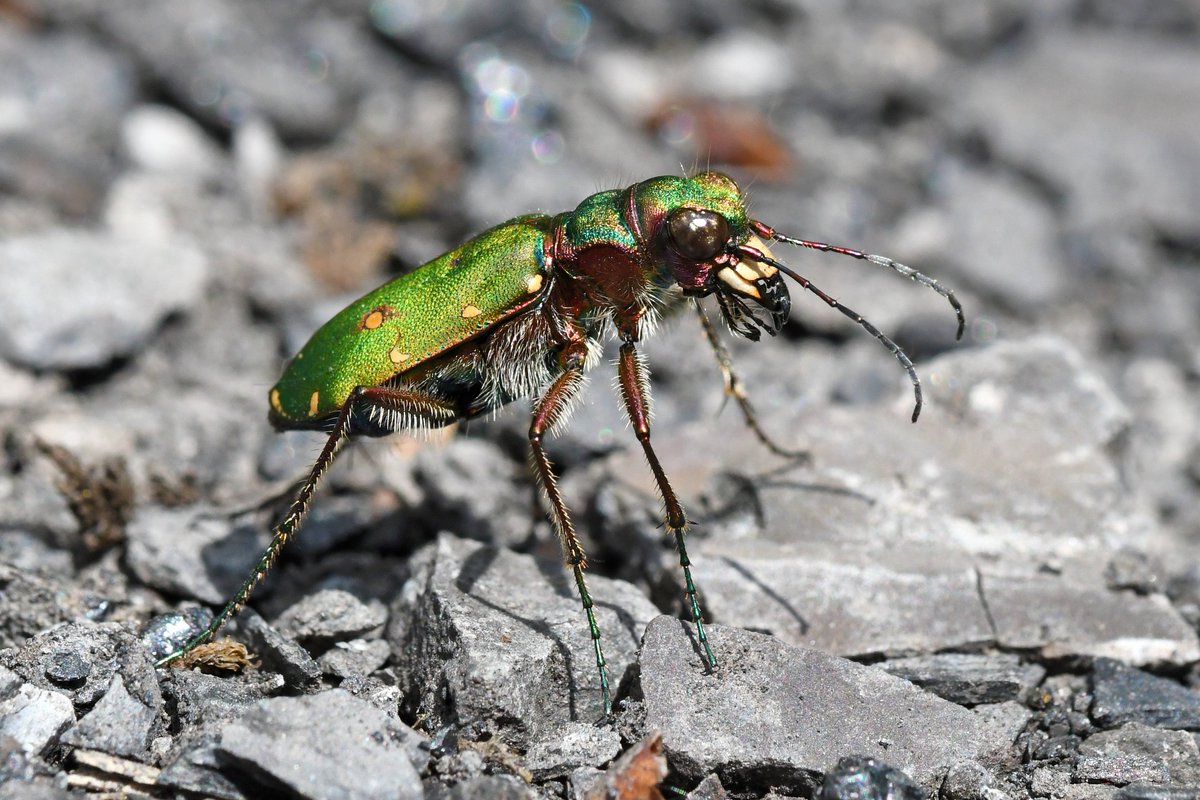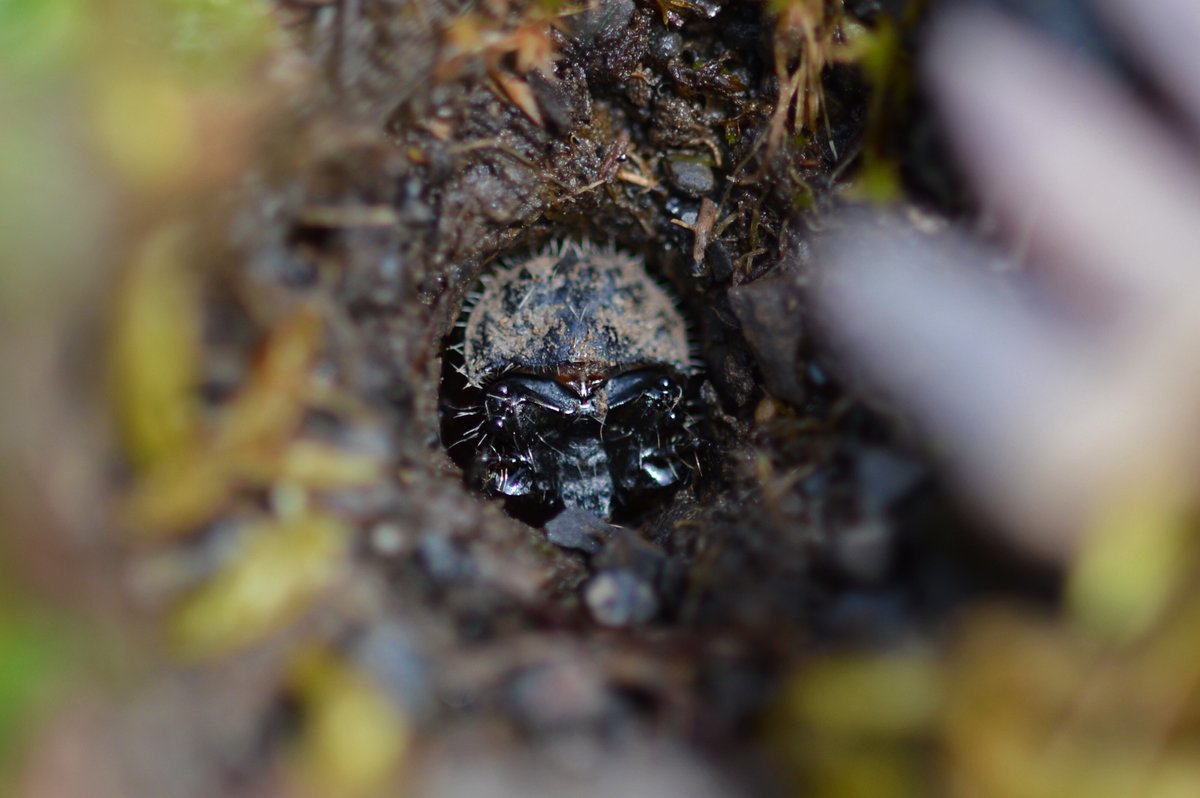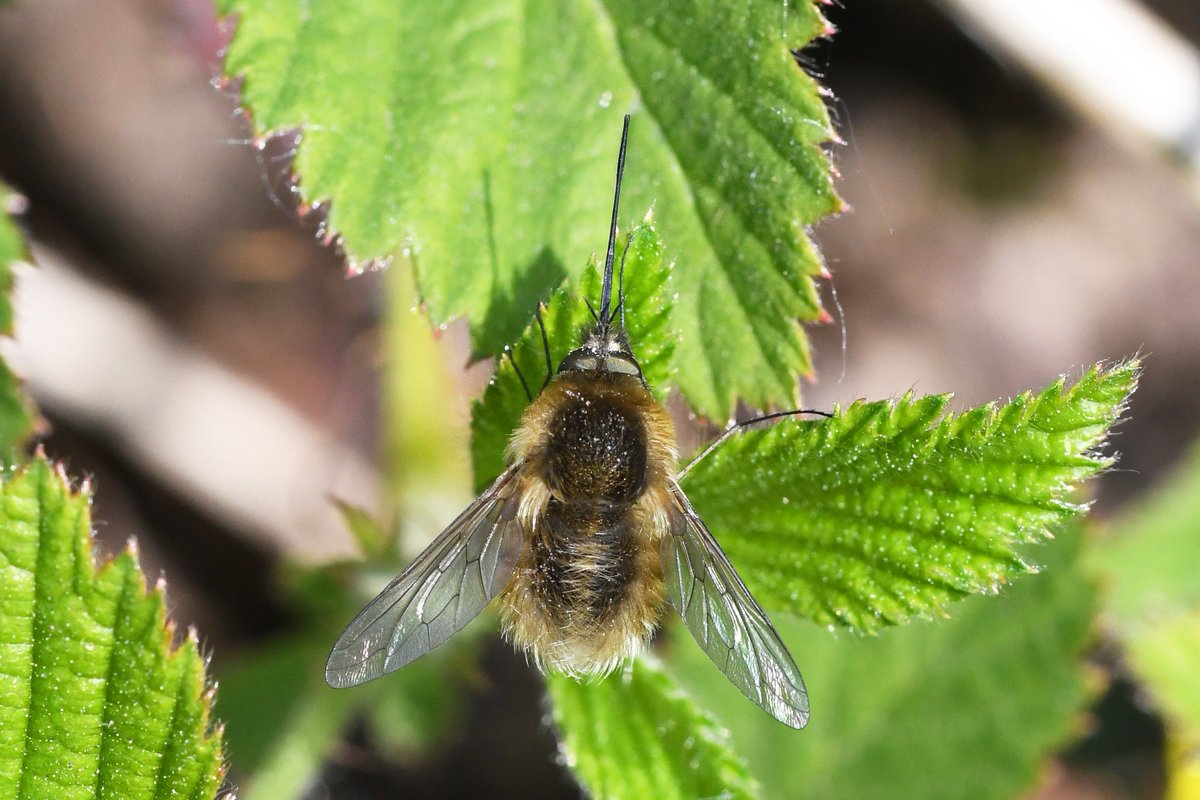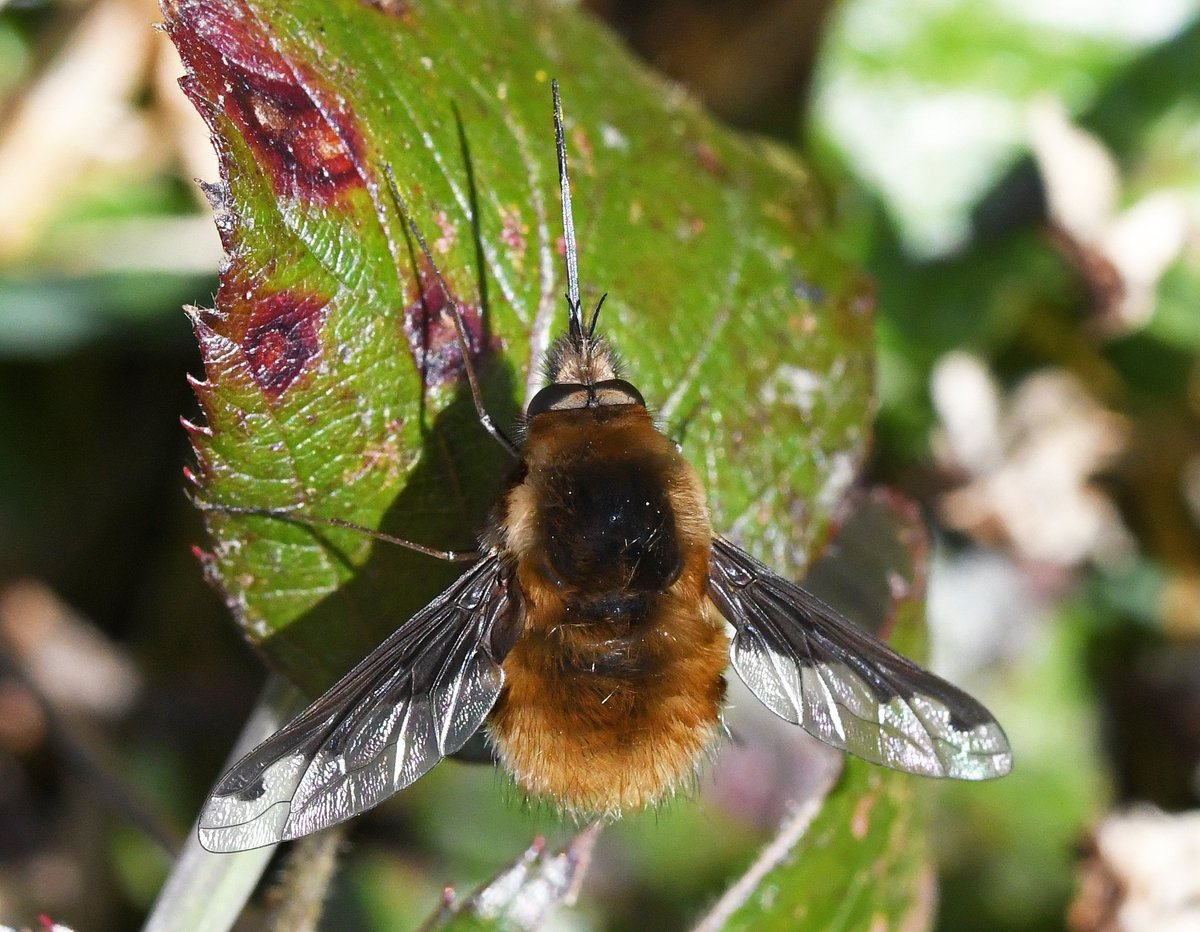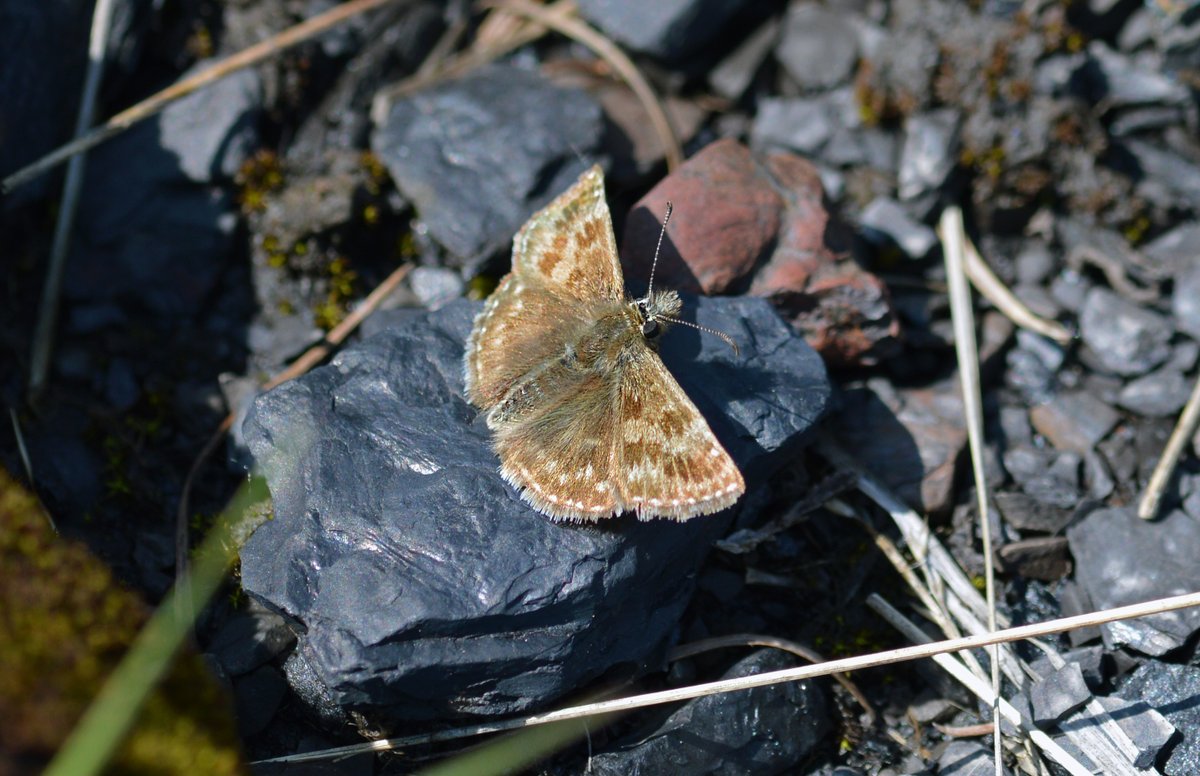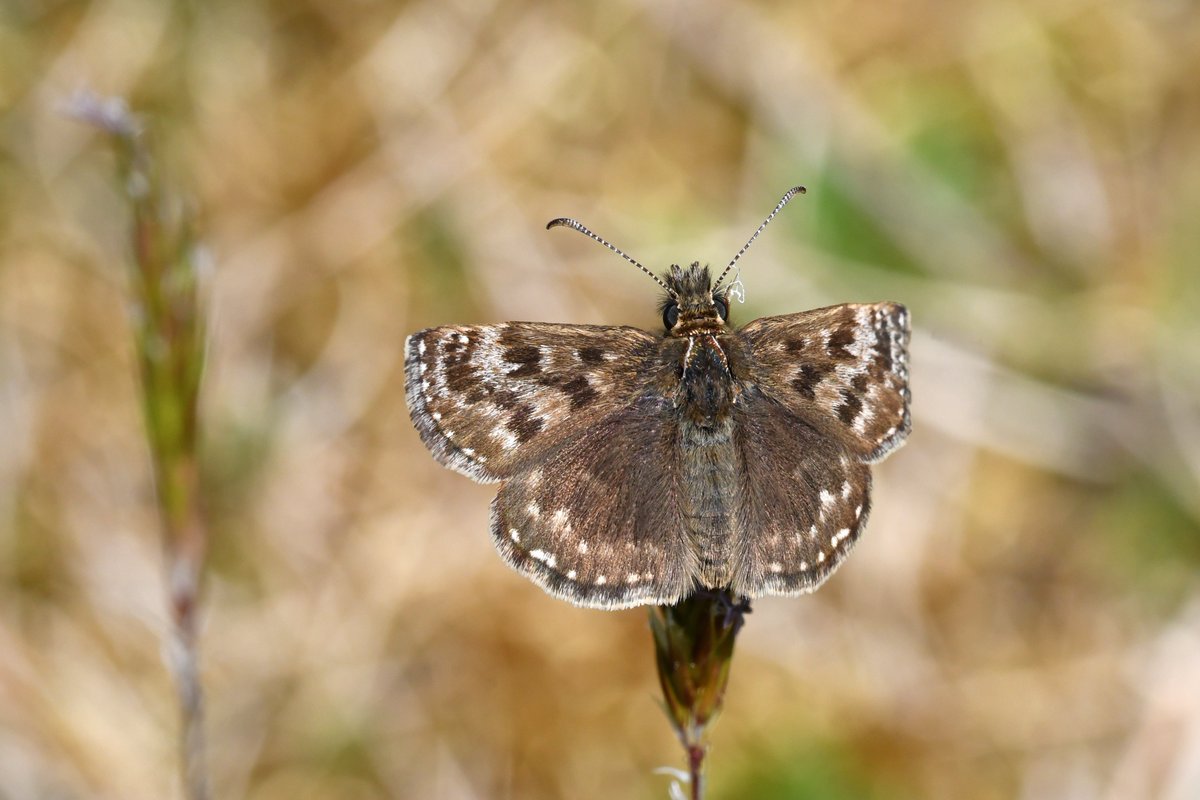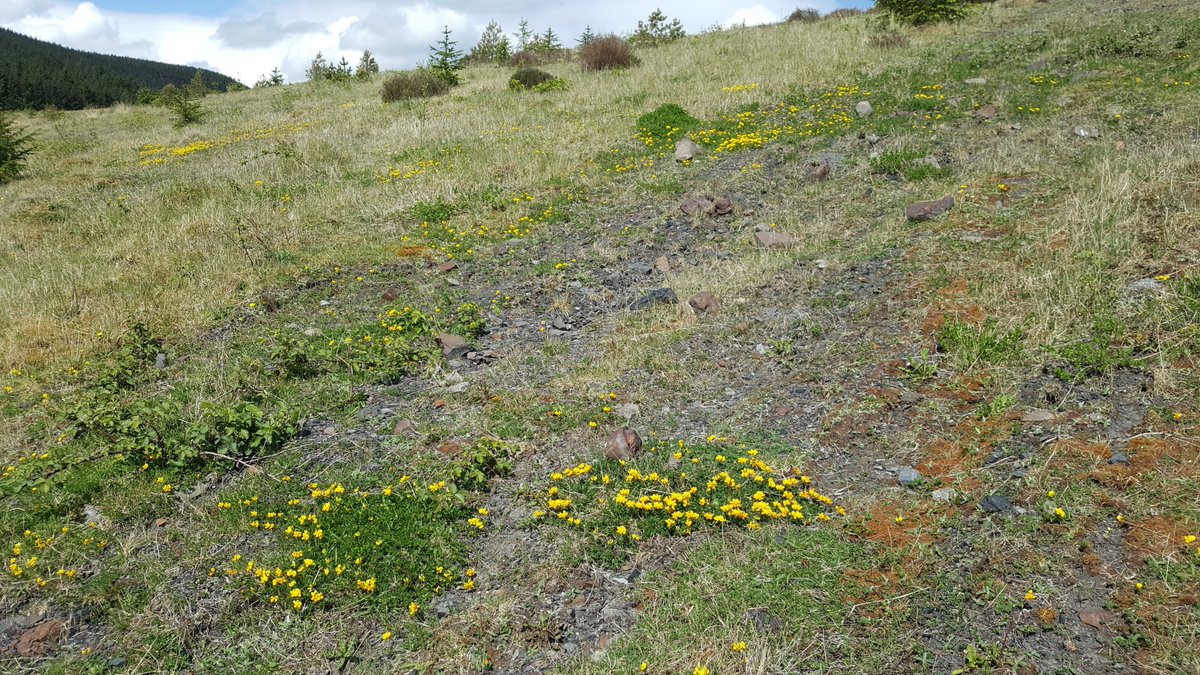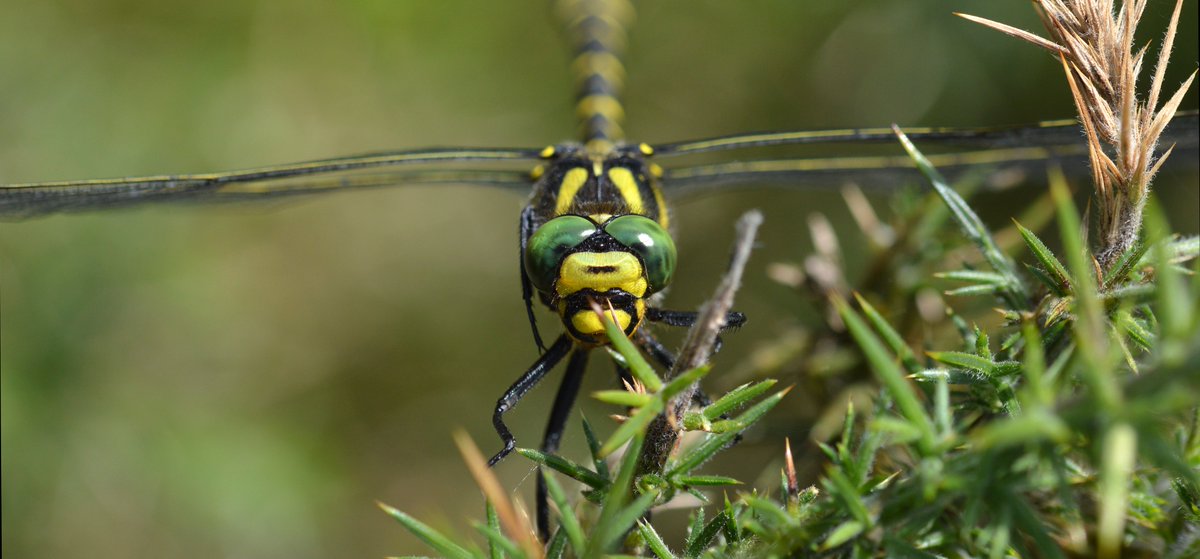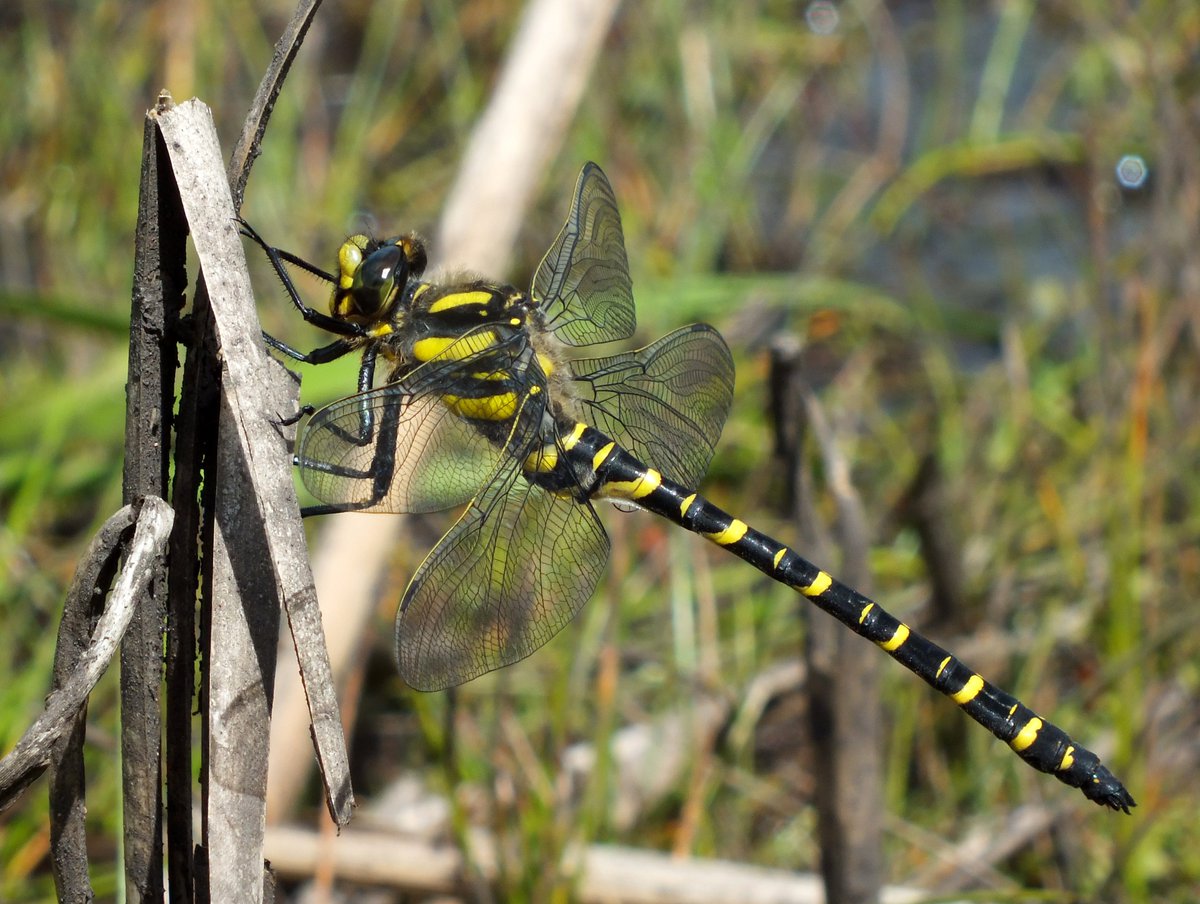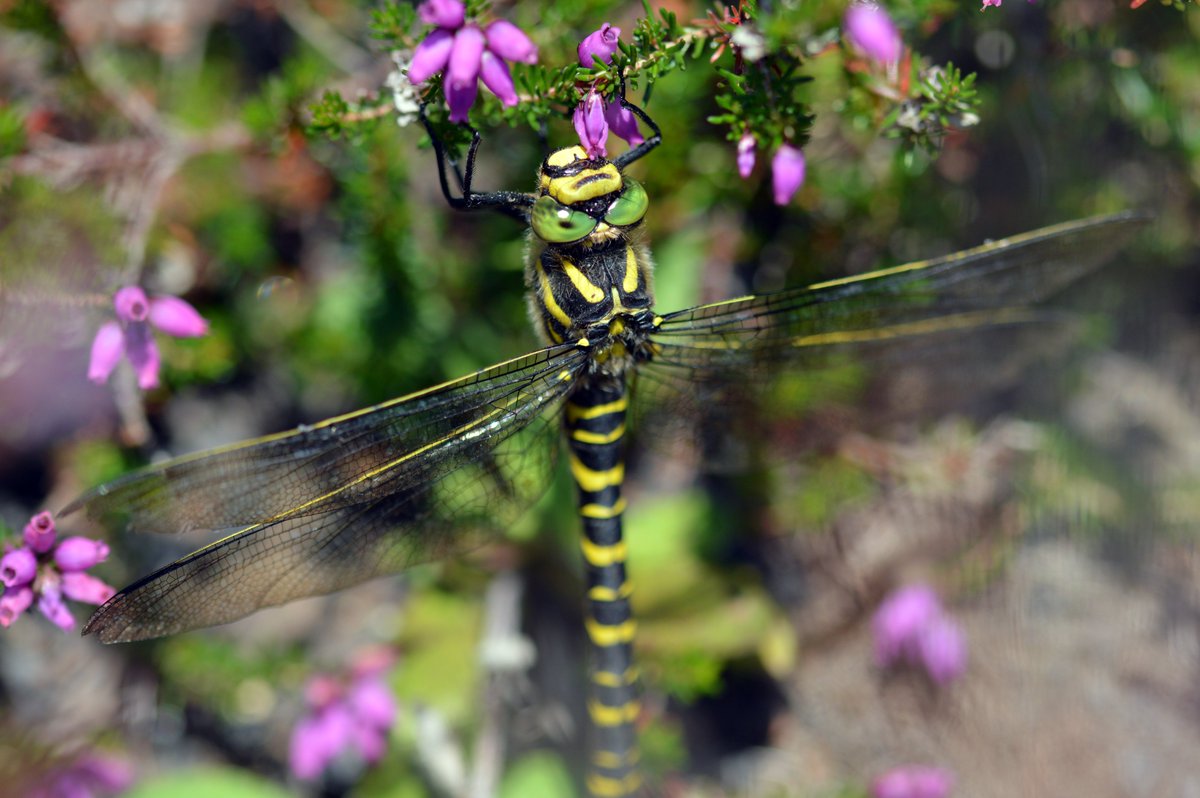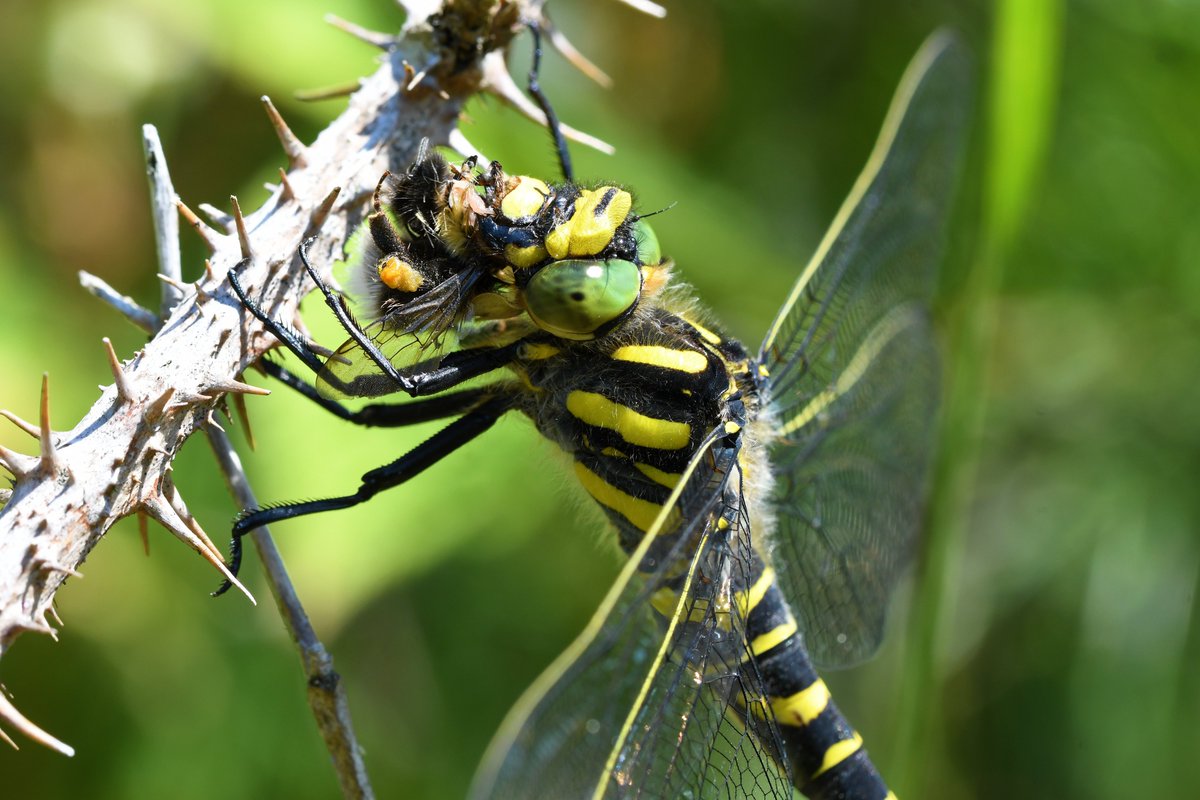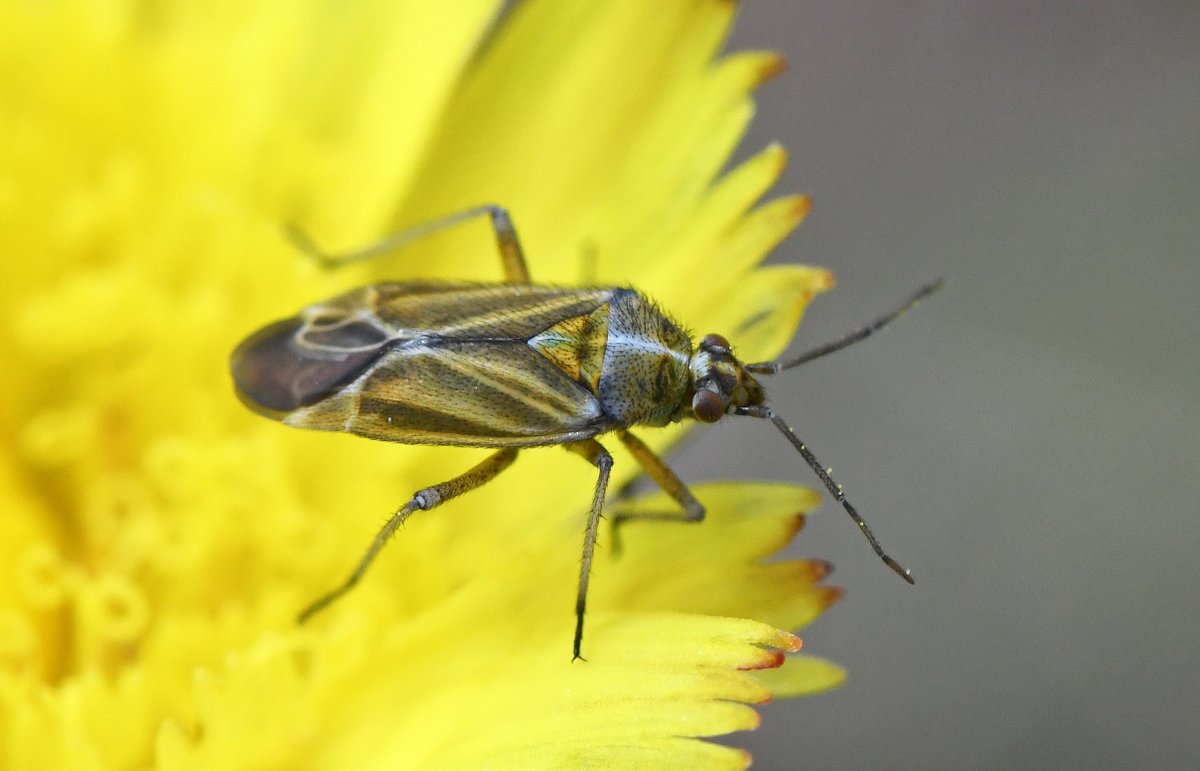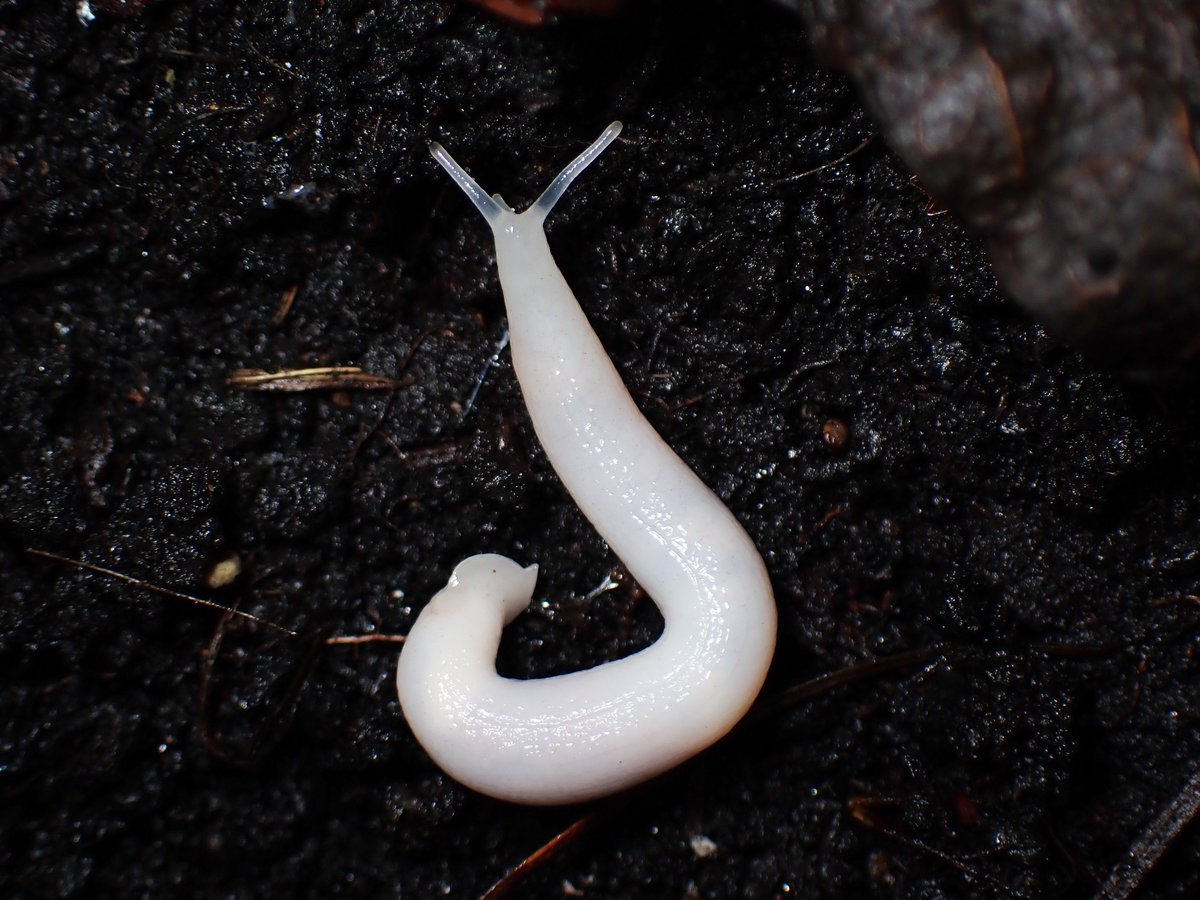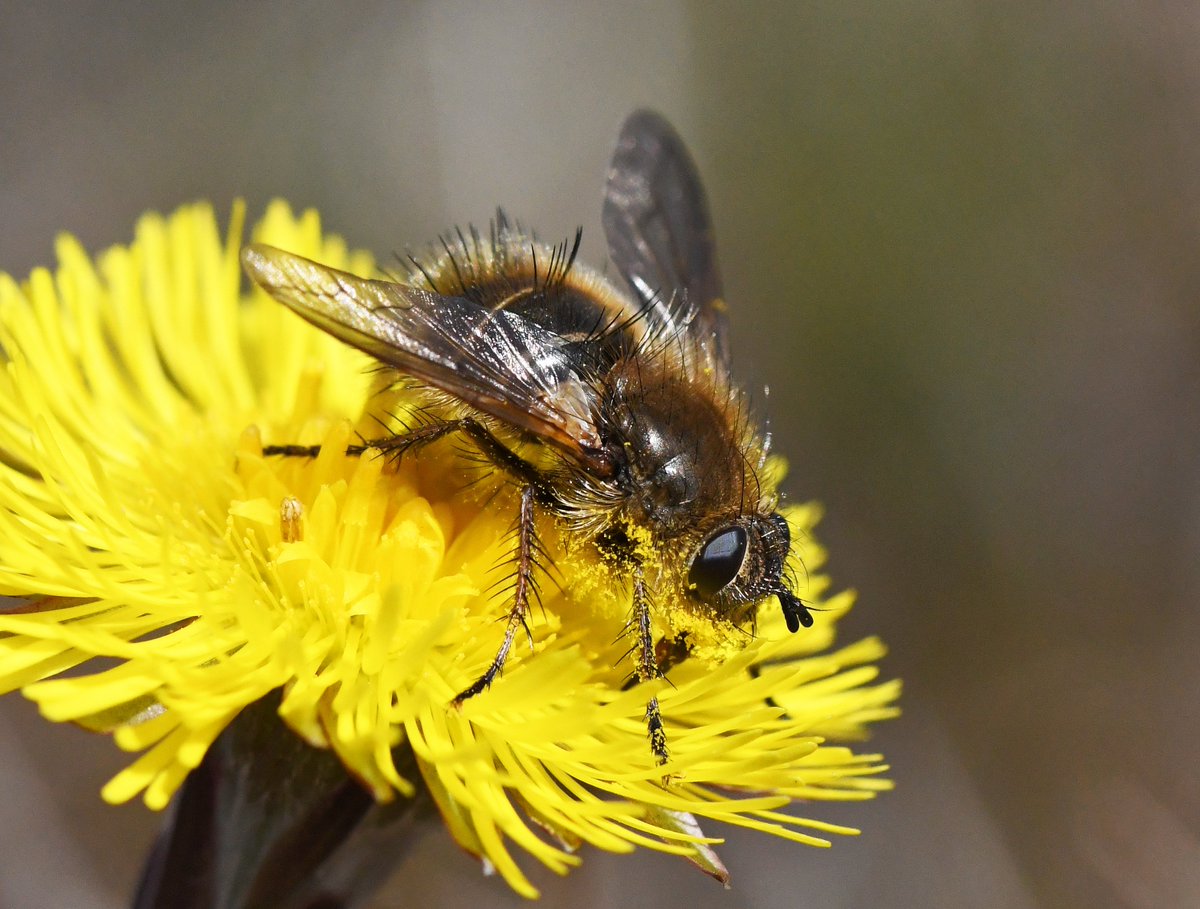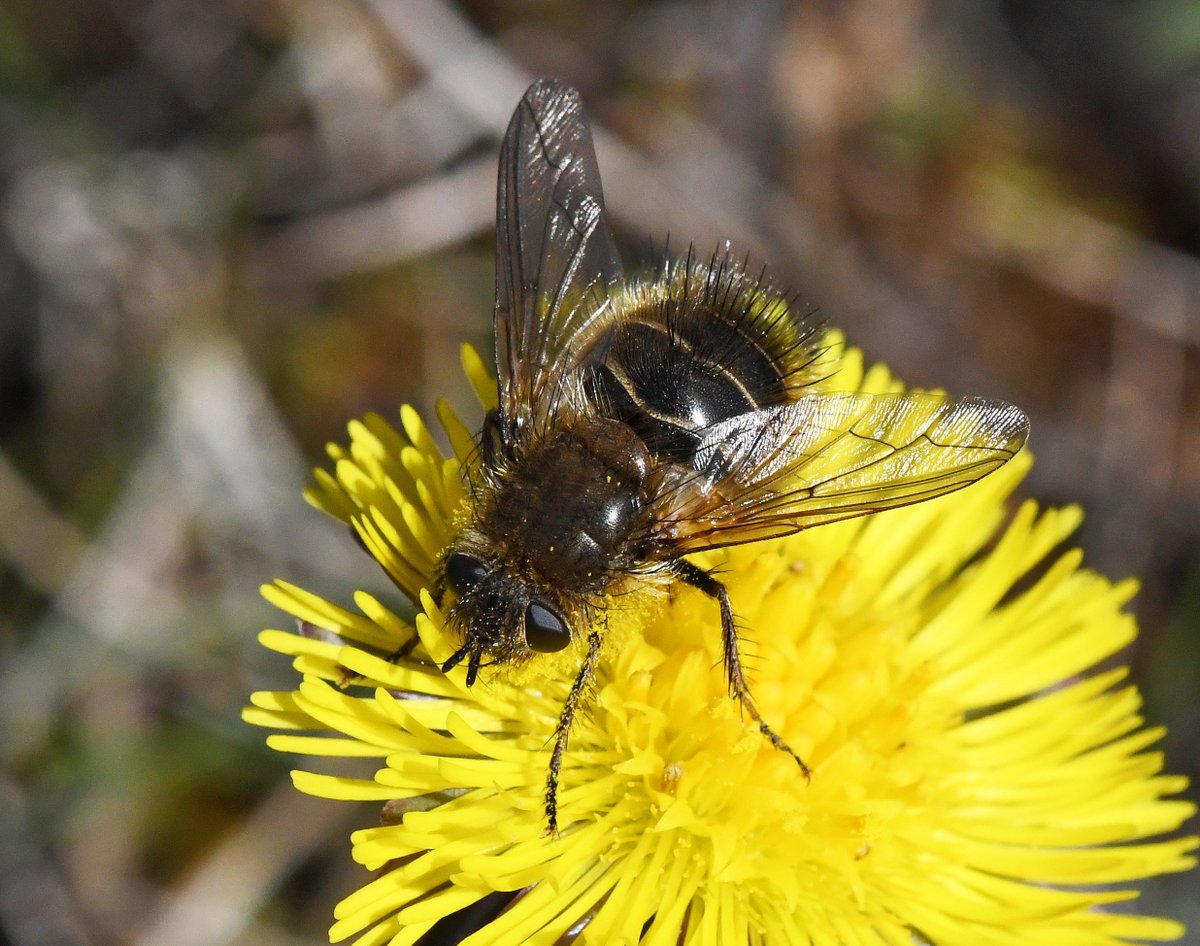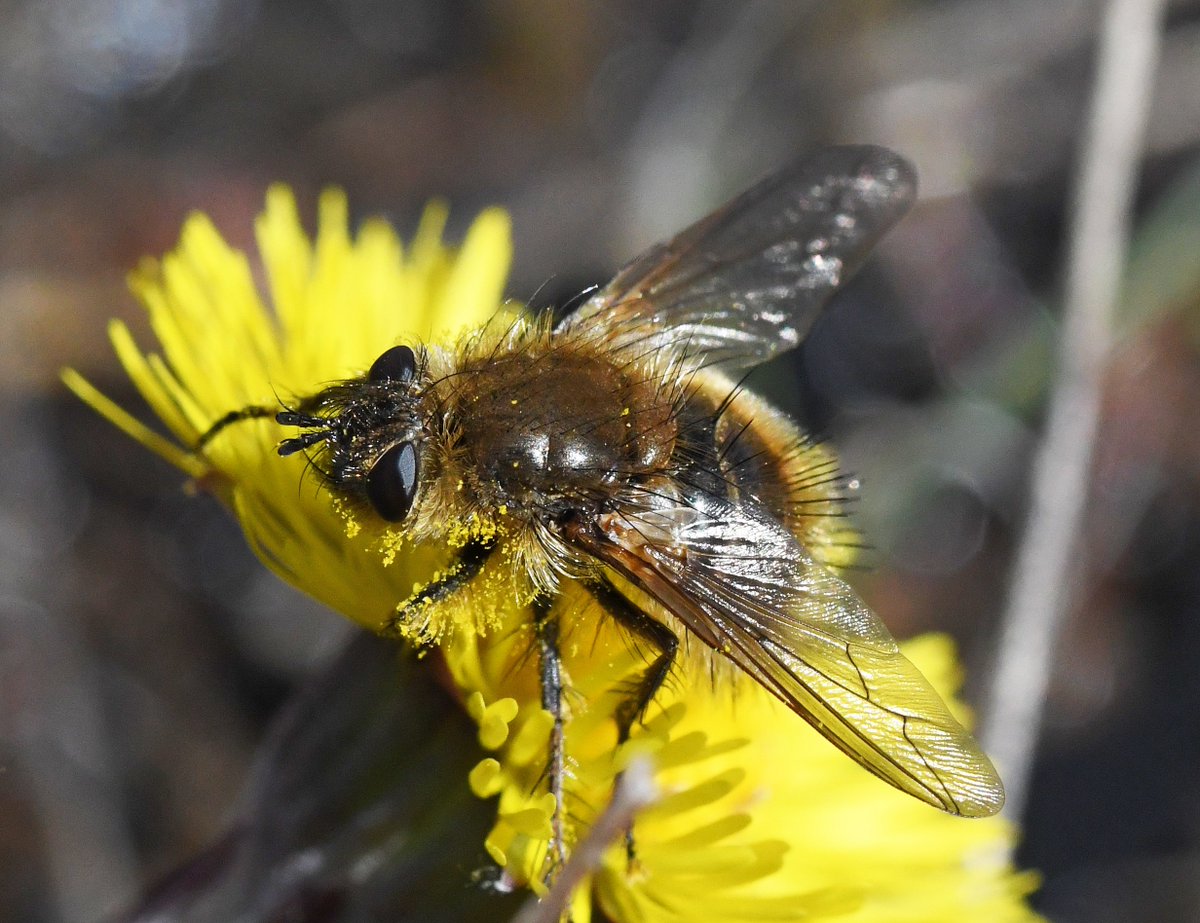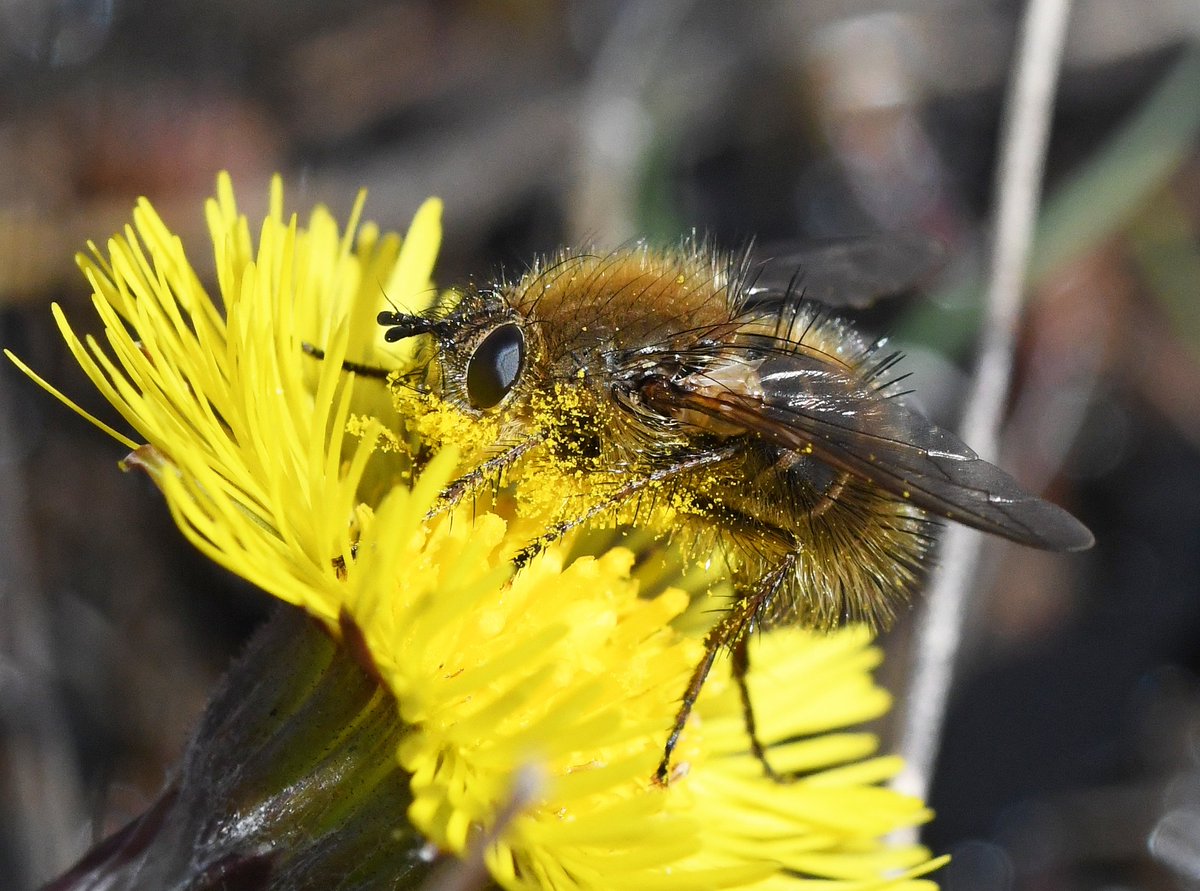Sharing the love for #invertebrates this #valentinesday2021, starting with Clarke's mining-bee (Andrena clarkella). This solitary bee is among the earliest to emerge in spring and is just one of over 90 different bee species found on @collieryspoil sites in S. Wales. L= R=
R=
 R=
R=
The Bilberry Bumblebee (Bombus monticola) is arguably one of the most beautiful British bumblebees. This declining upland species loves bilberry-rich heath on @collieryspoil. The South Wales Valleys are some of the most southerly locations in Wales to see this beauty.
As nest parasites of solitary bees, oil beetles have fascinating life-cycles that are intricately linked to those of its hosts. In recent years, both Black and Violet Oil Beetle have been encountered on @collieryspoil sites.  = Violet Oil Beetle (Meloe violaceus).
= Violet Oil Beetle (Meloe violaceus).
 = Violet Oil Beetle (Meloe violaceus).
= Violet Oil Beetle (Meloe violaceus).
Green Tiger Beetle (Cicindela campestris) may be a relatively common, but what fascinating little creatures they are! Notoriously fast, these beautiful, emerald green beetles love the dry, hot slopes of @collieryspoil sites. The larvae are even more amazing!
Who doesn't love bee-flies!? Two species of bee-fly can be found on @collieryspoil, Western bee-fly (Bombylius canescens) and Dark-edged bee-fly (B. major). These furry bundles of joy will be active in a matter of weeks. Take part in @SoldierfliesRS #BeeFlyWatch if you see them
Dingy skipper (Erynnis tages) is a beautiful butterfly that is by no means 'dingy'. The legume-rich grasslands of @collieryspoil sites, combined with their early successional conditions with bare ground, make them excellent sites for Dingy Skipper.
Golden-ringed dragonfly (Cordulegaster boltonii), the UK's longest dragonfly, is among the most frequently encountered dragonflies on @collieryspoil sites. A personal favourite owing to their inquisitive behaviour.
The plant bug Hoplomachus thunbergii is a rather uncommon species in Britain, but is found on most @collieryspoil supporting its food-plant in S. Wales. Adults can be found between June and July (nymphs from May) in the flower heads of Mouse-ear Hawkweed (Pilosella officinarum).
The Ghost Slug (Selenochlamys ysbryda), an unmistakable ghost-white slug that is a subterranean predator of earthworms. First described by @CardiffCurator scientists, it is actually believed to originate from the Crimea region of Ukraine. It likes damp woodlands on @collieryspoil
The final invertebrate to feature in our Top 10 is Tachina ursina - the Teddy-bear fly  Adults are active in March and April and are typically numerous on @collieryspoil sites during these months. They seem to love the flowers of Coltsfoot (Tussilago farfara).
Adults are active in March and April and are typically numerous on @collieryspoil sites during these months. They seem to love the flowers of Coltsfoot (Tussilago farfara).
 Adults are active in March and April and are typically numerous on @collieryspoil sites during these months. They seem to love the flowers of Coltsfoot (Tussilago farfara).
Adults are active in March and April and are typically numerous on @collieryspoil sites during these months. They seem to love the flowers of Coltsfoot (Tussilago farfara).

 Read on Twitter
Read on Twitter
